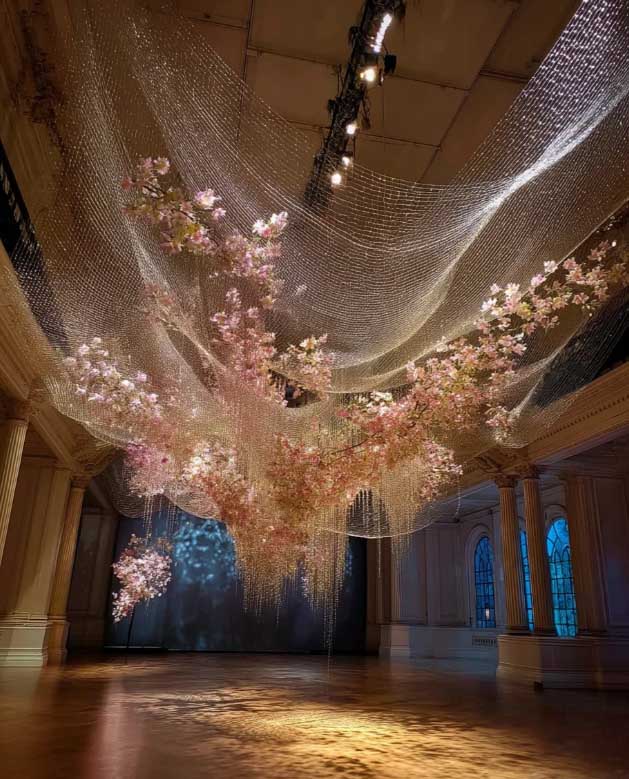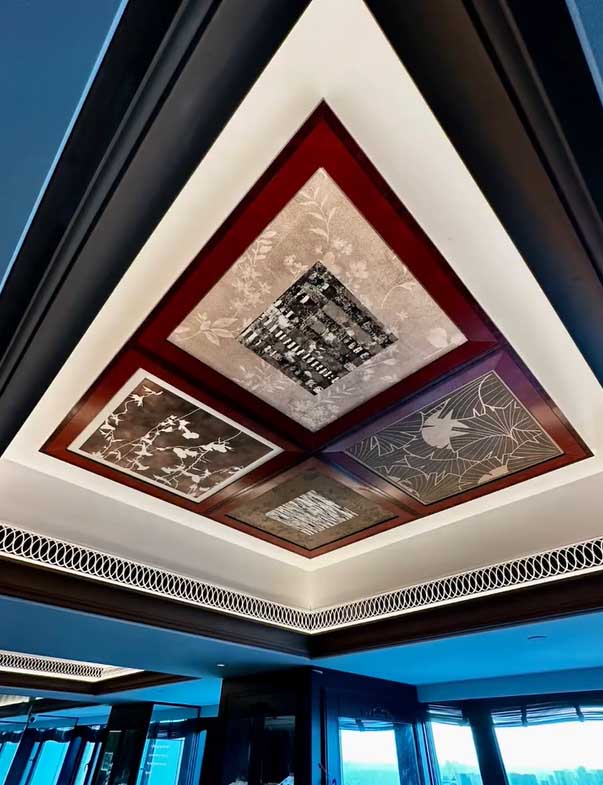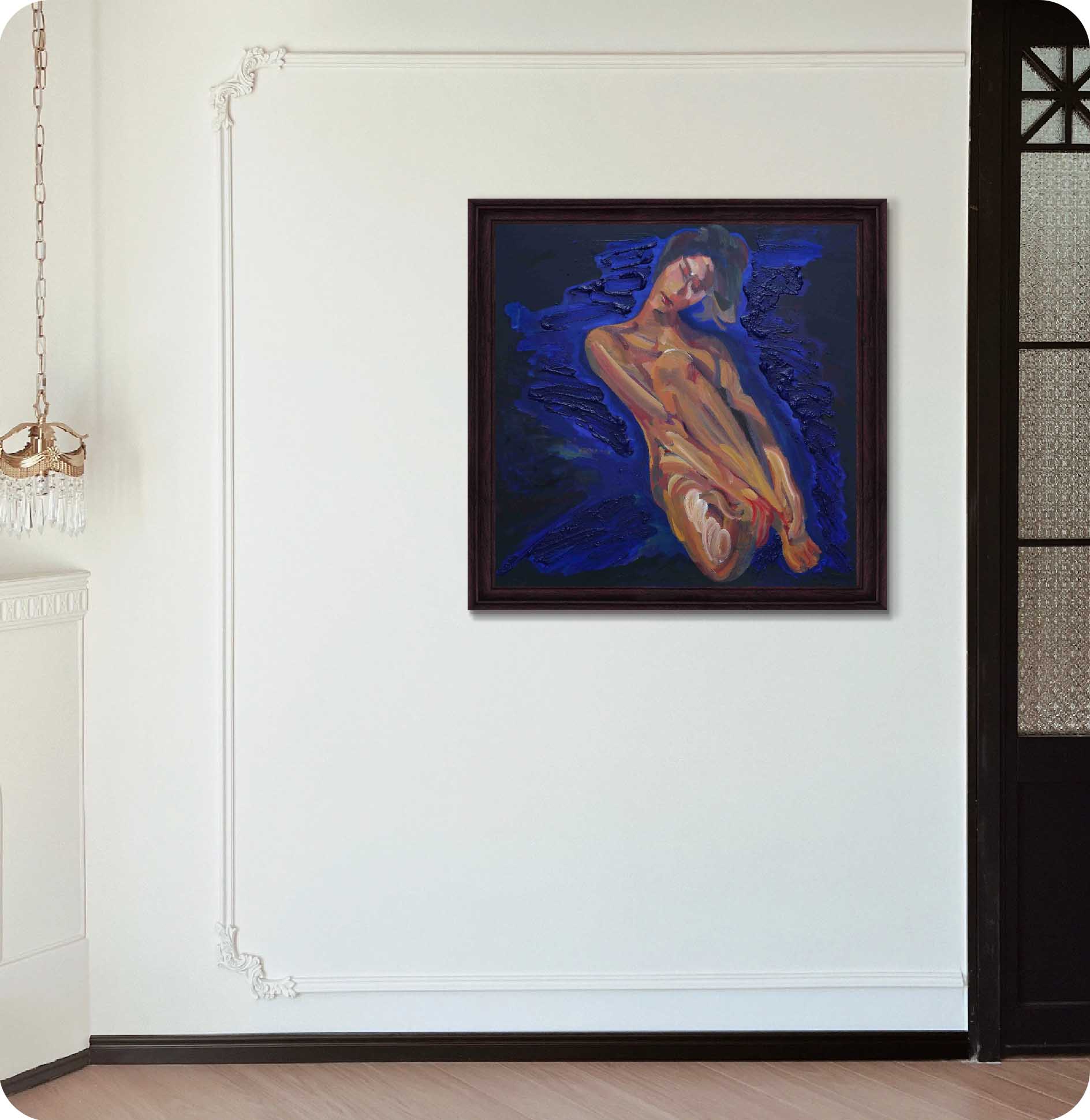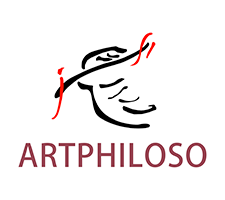A well-designed ceiling can redefine the entire aesthetic dimension of a space.
When you look up, do you see a blank surface or an artistic expression overhead? In interior design, the ceiling—often called the “forgotten fifth wall”—has long been overlooked. Yet today, a creative revolution is taking place: the rise of ceiling hanging art and decoration hanging from the ceiling.
From suspended installations to floating galleries, art for ceiling enriches spatial dimensions and becomes a new canvas for personal expression. This approach frees up floor space while infusing homes with depth, motion, and light.

The essence of ceiling hanging art lies in merging functionality and aesthetics, creating experiences that transcend traditional boundaries.
As architect Francesco Gatti proposed in his S.N.D Fashion Store design in Chongqing, “the ceiling is not the end of space, but the beginning of art.” He simulated physical elasticity using 3D software, creating a suspended, semi-transparent canopy of thousands of thin fiberglass panels.
This semi-permeable ceiling houses lighting, sound, sprinklers, and ventilation—proving that practicality and beauty can coexist. Modern ceiling design has evolved into a multidimensional artistic expression.
In Galerie Magazine, designer Ken Fulk transformed a stairwell into a fantastical world through hanging art ceiling techniques, showcasing how ceilings can create immersive experiences rather than mere decoration.

Ceiling hanging art spans multiple styles to meet diverse aesthetic and functional needs.
Linear and grid arrangements are classic. In a Houston mid-century home, designer Jamie Bush suspended 45 woodcuts by Tal R in a geometric grid, echoing the home’s modernist architecture while amplifying vertical rhythm and scale.
Organic and free-form compositions convey a softer visual appeal. As featured in Galerie Magazine, designer Marta de la Rica curated a vibrant art wall in a Madrid penthouse, blending contemporary works, antique prints, surrealist sketches, and childhood photos into one cohesive hanging display.
Sculptural and installation-based styles turn ceilings into platforms for artistic statements. According to coohom.com, luxury interiors often feature suspended chandeliers, light sculptures, and hanging paintings as central design elements that define the room’s character.
Finally, eco-natural themes are gaining popularity—using organic materials, plants, and woven textures to bring nature indoors and foster tranquility.
Successful ceiling hanging art requires thoughtful planning from concept to installation.
Detailed design planning is crucial. Whether using simulation software or simple paper sketches, visualization ensures the installation aligns with the desired effect. The Ma De Space exhibition exemplifies how spatial intervention can create artistic experiences.
Material choice determines both aesthetics and durability. Gatti’s project used translucent fiberglass to enhance light diffusion and spatial fluidity. For homes, lighter materials like wood, metal, or recycled fabrics can work effectively when designed for balance, transparency, and fire safety.
Lighting integration is key. Hidden LEDs and spotlights accentuate form and texture, producing dramatic light-play across the suspended pieces.
Safety must always be prioritized—anchoring heavier pieces to structural beams and ensuring no interference with fire or ventilation systems.
Ceiling hanging art adapts to diverse environments—each with unique design considerations.
In commercial spaces, The Ma De Space exhibition demonstrates how hanging installations can elevate spatial recognition.
In residential interiors, hanging art can be scaled according to room function. As Coohom notes, lighter tones and minimalist forms make small spaces feel open. In living or dining rooms, hanging installations serve as social focal points; in bedrooms, they can evoke serenity.
Stairwells are also ideal for vertical expression. Galerie Magazine’s stairwell project reimagined transitional space as immersive art, while Douban articles highlight that alignment with the stair’s slope ensures visual balance.
Functional zones like kitchens and bathrooms require durable, moisture-resistant materials such as glass or treated metal for longevity and easy cleaning.
Material and lighting choices define the atmosphere of ceiling hanging art.
Common materials include wood, metal, plaster, and fabric. In Gatti’s Chongqing store, ultra-thin translucent fiberglass produced a floating, ethereal effect. Home designers can explore sustainable options like bamboo, recycled plastics, and paper art elements to personalize decoration hanging from the ceiling.
Lighting strategies enhance both visibility and drama. Built-in LEDs or directional spotlights create dynamic shadows and highlight textures. Integrating lighting directly into suspended materials can make them glow as part of the overall design.
For simple home applications, adjustable smart lights or wall washers can transform the mood depending on the scene.
Color and texture profoundly influence spatial perception and emotional tone.
Modern ceiling designs move beyond plain white. Deep tones like navy or forest green can add warmth, while bold hues energize the room. In the Madrid penthouse by Marta de la Rica, unified color palettes connected artworks from different eras, proving color can weave visual harmony.
Textures—from plaster and fabric to acoustic panels—add depth and tactile contrast, also improving acoustics in living areas or home theaters. Three-dimensional compositions can project dynamic shadow patterns that evolve with lighting and perspective.
Introducing geometric patterns, like Tal R’s repeated woodcuts, adds rhythmic visual balance, while organic shapes create fluid naturalism. Innovative finishes—metallic paints, gradients, or mirrored surfaces—can dramatically shift spatial perception even in compact rooms.
Ceiling hanging art invites us to rethink spatial potential. When we look upward, the ceiling becomes a new canvas of imagination.
Great hanging art is more than decoration—it is spatial storytelling. Through materials, form, and light, it narrates the identity of a home or brand.
Whether through minimalist installations or intricate hanging paintings, these designs transform blank ceilings into inspiring environments that complete the three-dimensional beauty of a living space.
Hi, I’m Philo, a Chinese artist passionate about blending traditional Asian art with contemporary expressions. Through Artphiloso, my artist website, I share my journey and creations—from figurative painting and figure painting to floral oil painting and painting on landscape. You'll also find ideas for home decorating with paint and more.

No—if designed with light, translucent materials like fiberglass (as used in the S.N.D Chongqing store), it can actually enhance spatial perception.
Start with color consistency, as Marta de la Rica does. Then choose materials and forms that echo your furniture—industrial styles pair well with metal, rustic homes with natural fibers.
Opt for smooth, low-dust materials, use extendable dusters or compressed air, and design removable components for deeper cleaning.
Follow the “wall width × 0.57” rule for proportion. In crowded areas, one large piece often feels calmer than many small ones.
